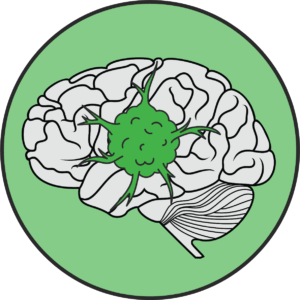
PAMIPARIB IN NEWLY DIAGNOSED AND RECURRENT GLIOBLASTOMA
About the Glioblastoma
clinical trial
The Ivy Brain Tumor Center at Barrow Neurological Institute, a nonprofit translational research program, is conducting a Phase 0/2 clinical trial to evaluate pamiparib (a PARP inhibitor) in patients with newly diagnosed or recurrent glioblastoma. If the research shows that pamiparib is reaching the tumor tissue, we will compare it with olaparib, another PARP inhibitor, which is currently in Phase 2 trials for newly diagnosed and recurrent glioblastoma.
The goal of this study is to confirm that the drug (treatment agent) is capable of crossing the blood-brain barrier. Patients with positive results may continue to receive treatment in Phase 2 while receiving standard of care radiation therapy. We will also confirm if the study drug is hitting the molecular targets.
- PARP is a protein that plays an important role in cell survival response to DNA damage.
- Pamiparib (BGB-290) is an investigational small molecule PARP inhibitor that blocks the DNA repair process.
- Pamiparib is currently in global clinical development for a variety of solid tumor malignancies.
- Olaparib is an FDA-approved drug currently used to treat advanced ovarian and breast cancer in adults. It is not approved to treat brain tumors.
Glioblastoma Trial Details
Recruiting
Pamiparib
Olaparib
Glioblastoma
30 Participants

You may be eligible if:
- You are 18 years or older
- You have a suspected newly diagnosed glioblastoma and plan to follow the standard treatment regimen
-OR-
- You are 18 years or older
- You have had prior resection (surgical removal) of a histologically diagnosed grade IV glioma
- You have been treated with radiation and a chemotherapy drug called temozolomide
- Your doctor has told you that your tumor has recurred (come back) or has progressed (grown or changed) and you require resection with radiation therapy as part of your post-surgical treatment plan
Phase 0/2 Clinical Trial: How it works

Once enrolled, a patient receives a short exposure to the experimental therapy days before a planned operation to remove their tumor.

This exposure is enough that when we remove the tumor, our team of experts can answer an important question: Did the treatment penetrate the tumor?

If the drug penetrates the tumor at sufficient levels, the patient may move forward with receiving the treatment in a Phase 2 study arm.

Alternatively, if the treatment has no effect on the tumor, the patient can enroll in another clinical trial without losing time or receiving ineffective treatment.
Am I Eligible?
Submit a free trial screening request today to learn if you may qualify for a clinical trial or talk to an Ivy Navigator by calling 602-406-8605.


